What Is Beam Bridge | Types of Beam Bridges | Beam Bridge Works | Advantages & Disadvantages of Beam Bridges
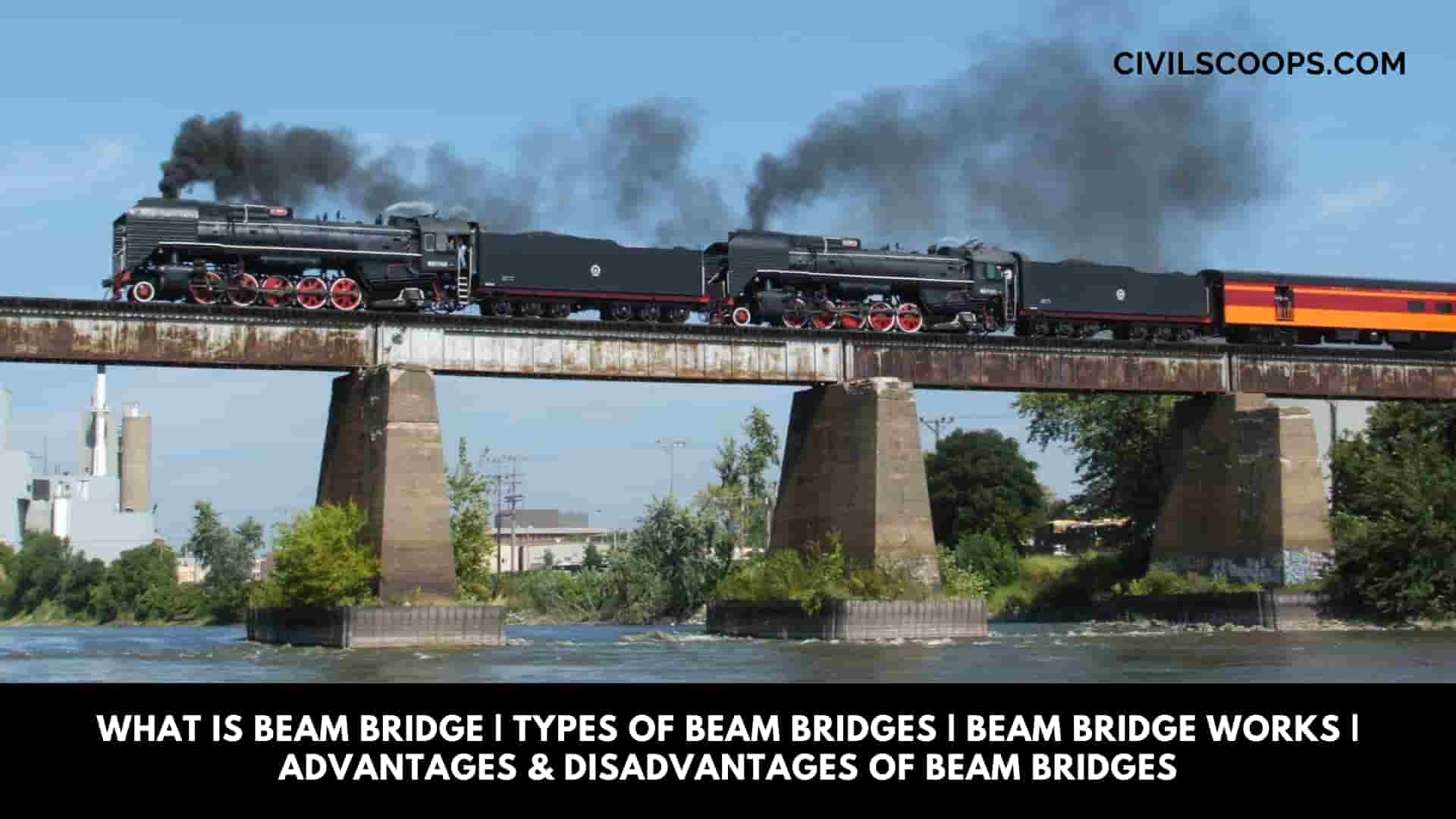
Table of Contents
Introduction of Beam Bridge
Bridges are one of the most important parts of the Infrastructure of the country which plays a great role in the transportation of raw materials from one end to another end.
There are many types of bridges which are constructed for the movement of traffic. In which article, you will get to know about beam Bridge and the types of beam Bridge.
What Is Beam Bridge?
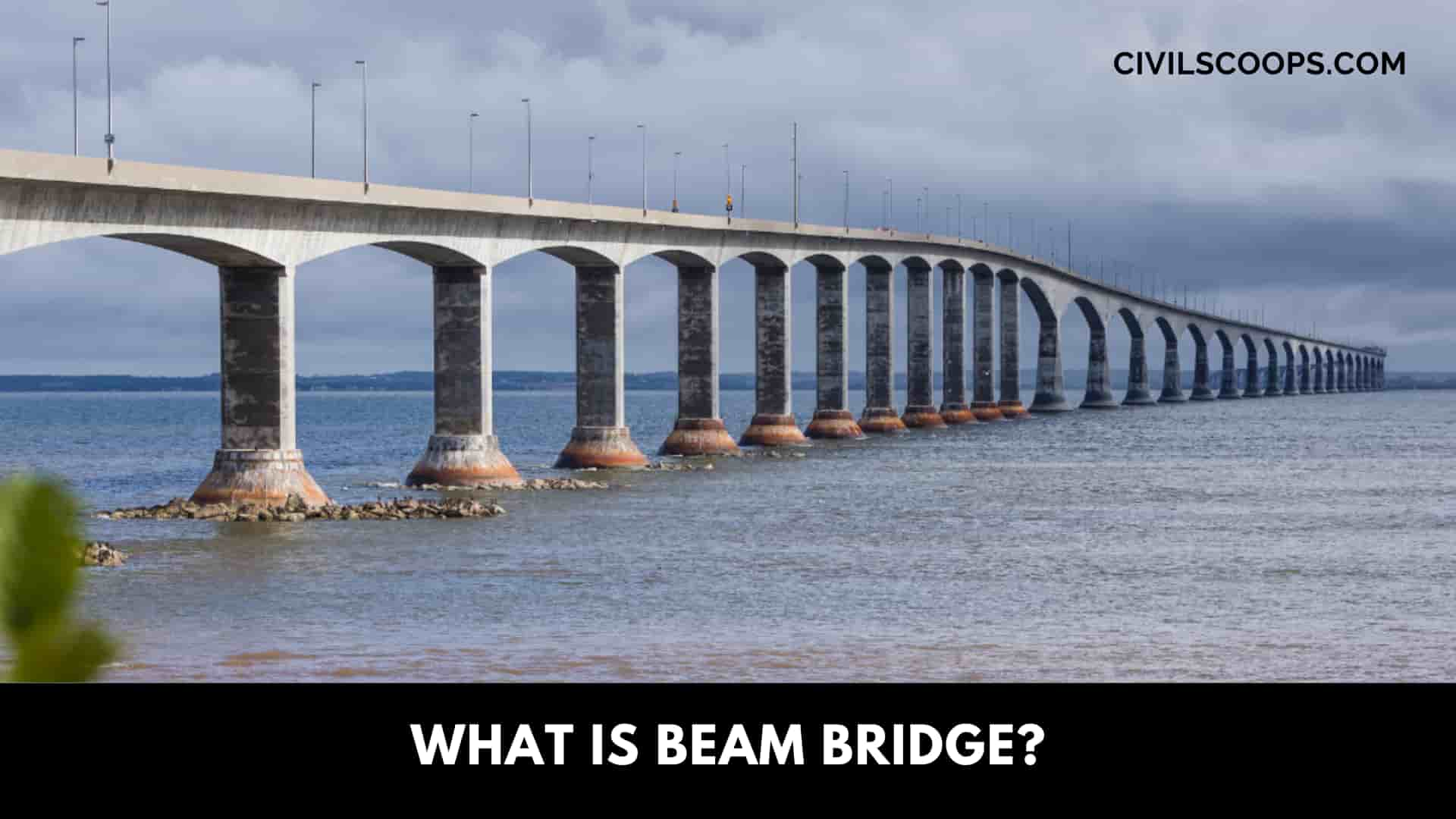
Beam Bridge is one of the most common and widely used basic types of Bridge. Beam Bridge is also known as the Girder Bridge.
The main aim of constructing a bridge is to provide passage of traffic from one end to another end. Beam Bridges are the simplest structural forms for the spans of the bridge which is supported by the abutments or piers at each end.
It is basically a horizontal slab for beam which is supported at each end. Beam Bridge is a common type of bridge which is held by the supports at the ends.
In this type of bridge, no moments will get transferred throughout the support so that it is known as simply supported. Beam bridges can carry pedestrians, trucks, light rail and heavy rail etc.
It is very necessary to calculate all the bending moments in a beam to establish a safe design for the construction of beam bridges.
Material Used in the Construction of Beam Bridge
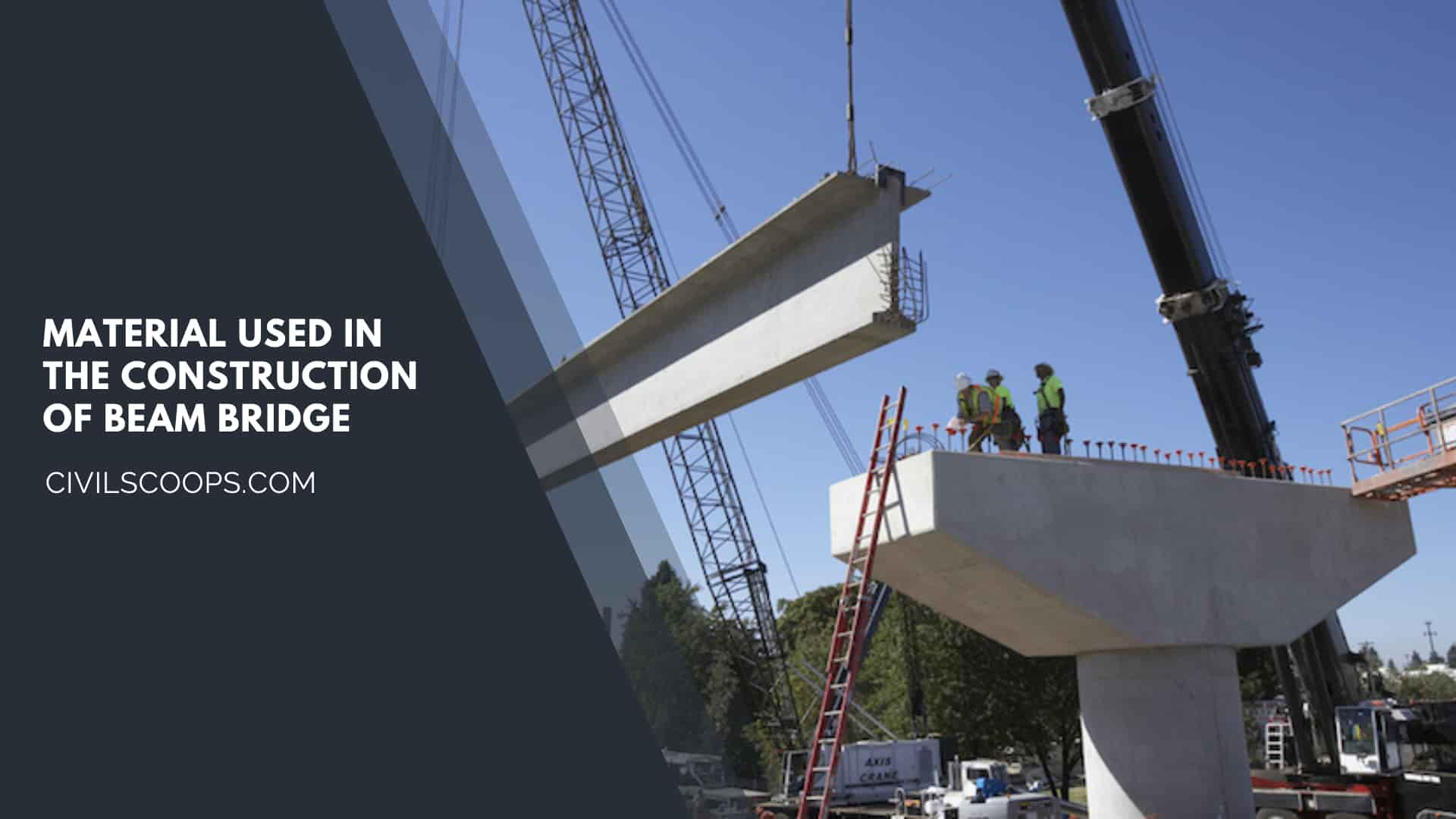
Nowadays there is an Advancement in the technology due to which the advanced materials are used for the construction of bridges.
The materials which are used in the construction of beam bridges are as follows:
- Timber
- Iron
- Steel
- Reinforced cement concrete
- Prestressed concrete.
Prestressed concrete material is best for the construction of beam Bridge because it can endure high compressive stresses.
Types of Beam Bridges
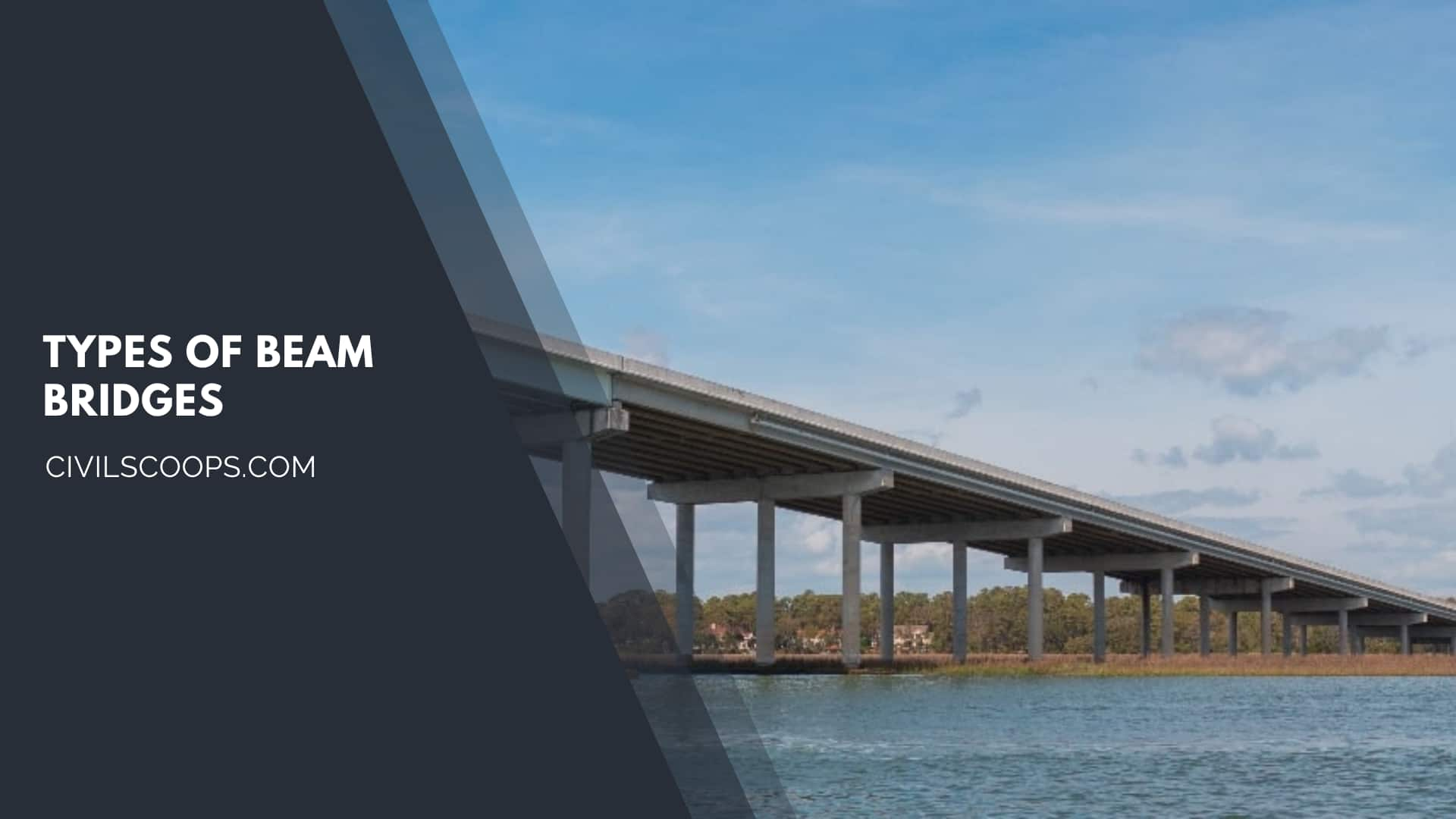
The Beam Bridge is categorised into mainly four types which are listed below:
1. Based on the Geometry
- Straight beam Bridge
- Curved beam Bridge
- Tapered beam Bridge
2. Based on the Shape of the Cross-Section of the Bridge
- I-Beam Bridge
- T-Beam Bridge
- C-Beam Bridge
3. Based on the Equilibrium Conditions of the Bridge
- Statically determinate beam Bridge
- Statically indeterminate beam Bridge
4. Based on the Type of Support
- Simply supported beam Bridge
- Cantilever beam Bridge
- Overhanging beam Bridge
- Continuous beam Bridge
- Fixed beam Bridge
Description of the beam Bridges in detail is given below
1. Beam Bridges Based on the Geometry

a. Straight Beam Bridge
Street beams at the horizontal component which are used to support vertical loads.
b. Curved Beam Bridge
In the curved beam, there are some assumptions which are taken like the cross-section has access of symmetry in a plane along with the length of the beam. The modulus of elasticity e remains the same in tension and compression.
c. Tapered Beam Bridge
The stress analysis of the tapered beam is different as compared to the uniform beam section. The tapered beam is subjected to the tip bending load which is analysed to predict the distributions of stresses.
2 Classification of Beam Bridge Based on the Shape
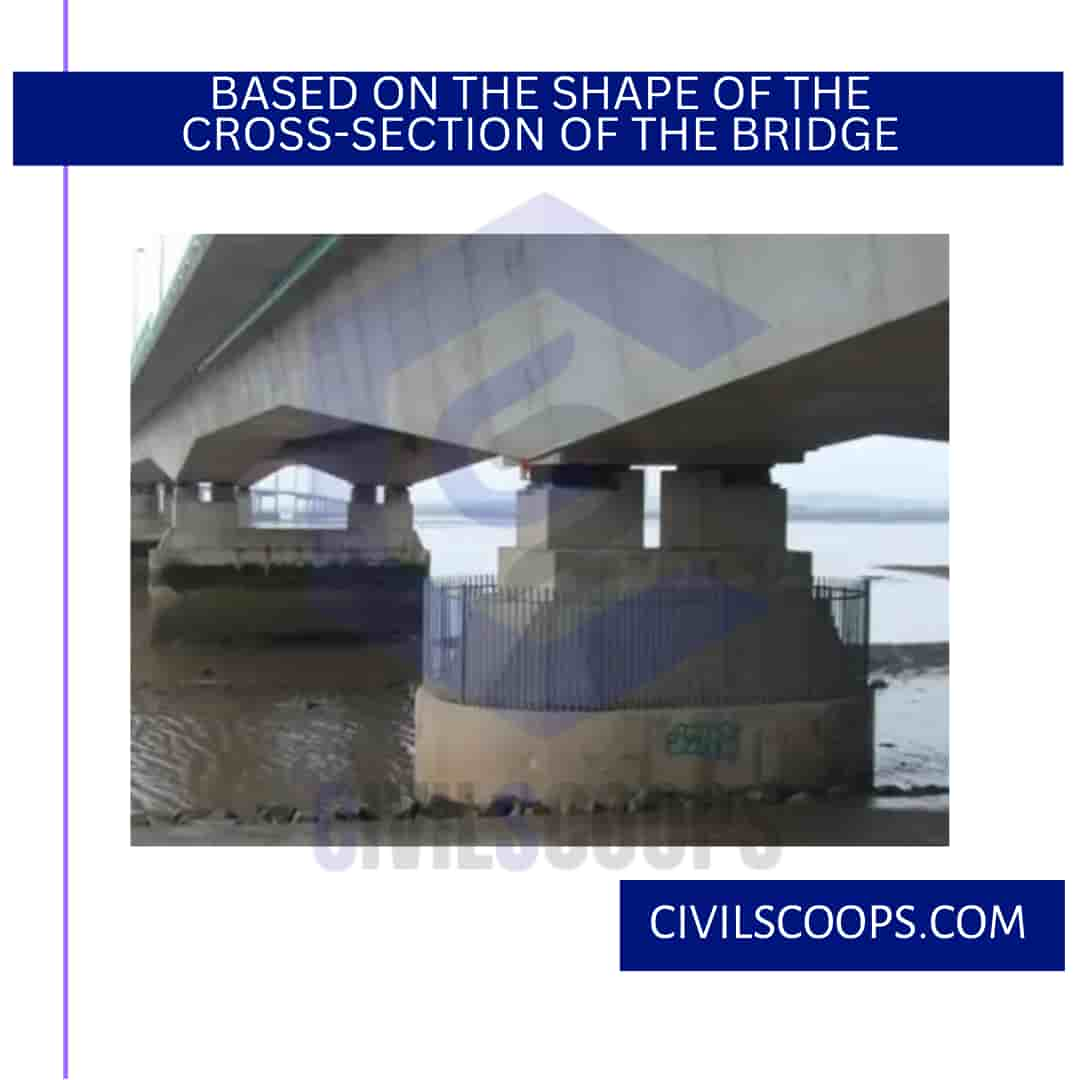
a. I Beam Bridge
I-beam beams are more economical and easy to fabricate. I-Beam has a high moment of inertia which will help to resist the moment.
b. T Beam Bridge
This type of beam is made monolithically with the reinforced cement concrete.
c. C Beam Bridge
C-beam is also known as channel Beam. It has high load carrying capacity and can be made from concrete, steel and heavy wood.
3. Classification Based on the Equilibrium Conditions

a. Statically Determinate Beam Bridge
In regards to beams, if the reaction forces can be calculated using equilibrium equations alone, they are statically determinate.
On the other hand, if the reaction force can’t be determined using equilibrium equations only, other methods have to be used, and the structure is said to be statically indeterminate.
b. Statically Indeterminate Beam Bridge
The structures of the bridges which cannot be analysed using statics equations only, they may require material properties.
4. Classification Based on the Type of Support

a. Simply Supported Beam Bridge
Supports, it is called a simply supported beam bridge. If two or more beams are joined rigidly together over supports, the bridge becomes continuous.
b. Cantilever Beam Bridge
Cantilever beam Bridge is a type of beam Bridge which is supported at one end only and free at another end.
c. Overhanging Beam Bridge
Overhanging beam has at least two supports at one end and other is at another end.
d. Continuous Beam Bridge
Continuous beam Bridge is a type of bridge which has more than two supports.
e. Fixed Beam Bridge
Fixed Beam Bridge is a type of bridge which is rigidly fixed at both ends.
How Does a Beam Bridge Work?
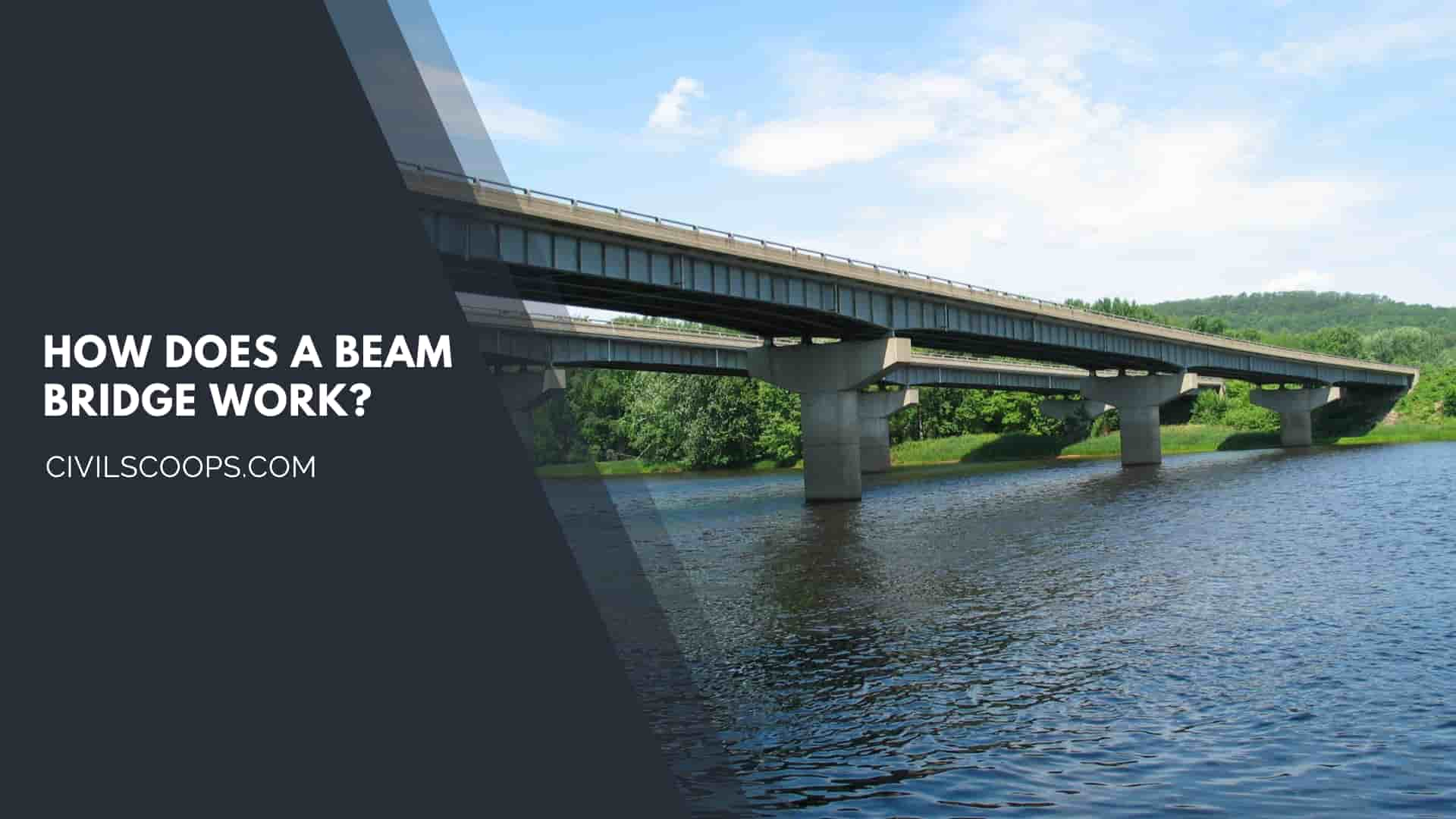
The Beam bridge is simply a horizontal slab which rests on the supports at the ends. The support carries the load coming on the bridge due to heavy traffic and transfers it to the foundation.
In case of the beam Bridge, the whole weight of the beam pushes straight down on the piers or the supports. The beam should be strong such that it does not bend under its self-weight it and the additional weight by the movement of heavy traffic.
When the load coming from the heavy traffic tends the Beam to bend. In this case, the upper edge of the beam is in compression and the bottom portion of the beam is in tension.
Beam bridge can endure both compressive stresses as well as tensile stresses. Beam bridges weight and strength depend upon the distance off the bridge.
The strength of the beam Bridge is influenced by the distance between two piers.
The bridge mainly consists of three elements which are
- Substructure
- Superstructure
- Deck of the Bridge
1. Substructure

The substructure consists of the foundation which transfers the load of the weight of the bridge to the underground Strata. It also consists of columns or piers and abutments
2. Superstructure
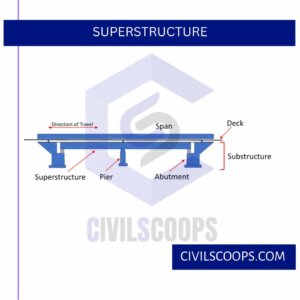
The superstructure of the bridge is the horizontal slab which spans between the two supports.
3. Deck of the Bridge

The function of the Deck of the bridge is to carry the movement of traffic from one end to another end.
Also Read: 23 Different Types of Cement Available in India and as Per Is Standards
Advantages of Beam Bridges
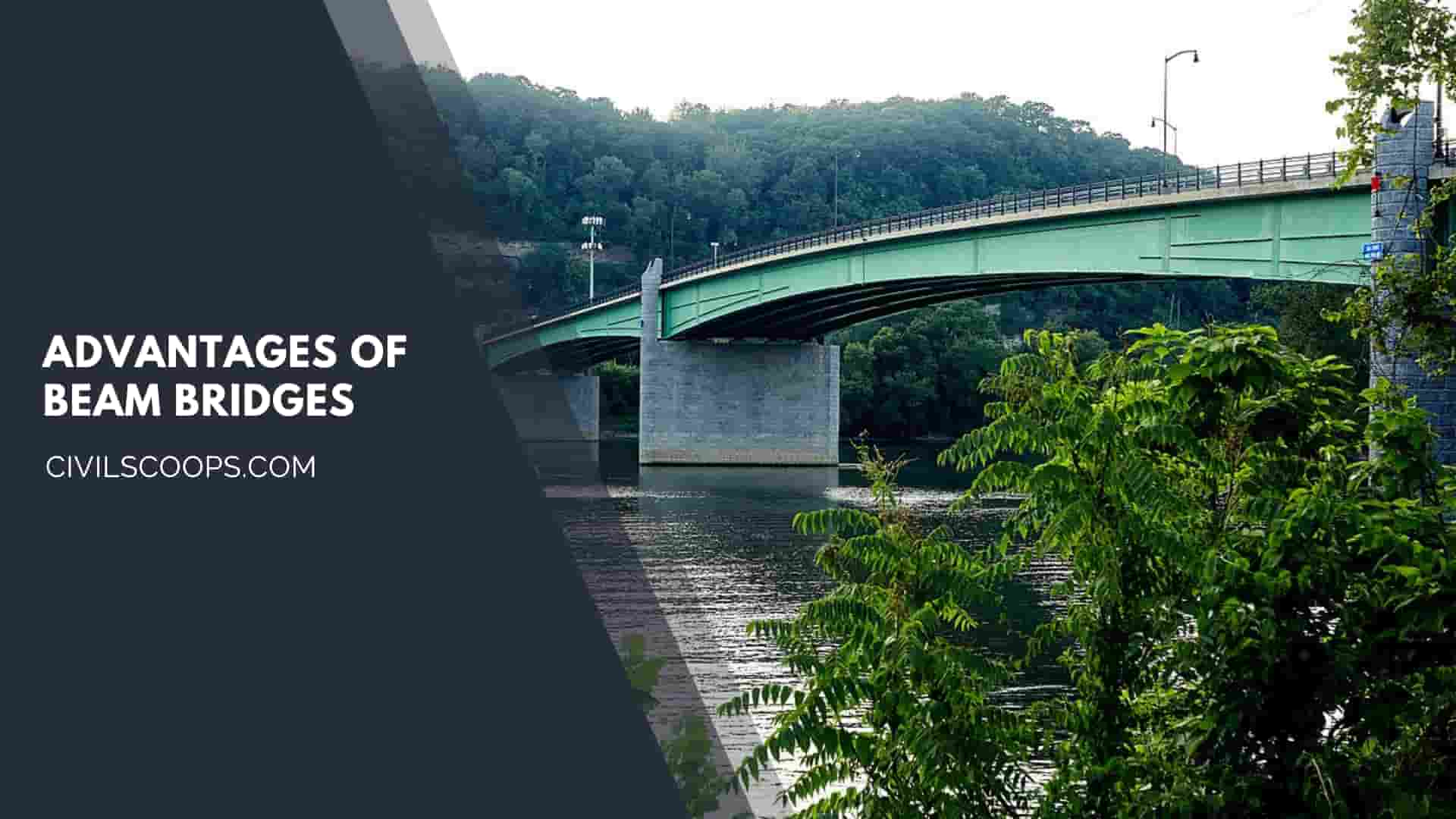
There are many advantages of bridges which are as follows
- Beam bridges are very simple and easy to construct.
- Beam bridges are mostly used in the rural and urban areas.
- In the construction of beam bridges, the Beam rests simply on the supports.
- Beam bridges are economical as compared to other types of bridges.
- Beam bridges can easily sustain the effects of thermal expansion and movements of the ground.
Disadvantages of Beam bridges
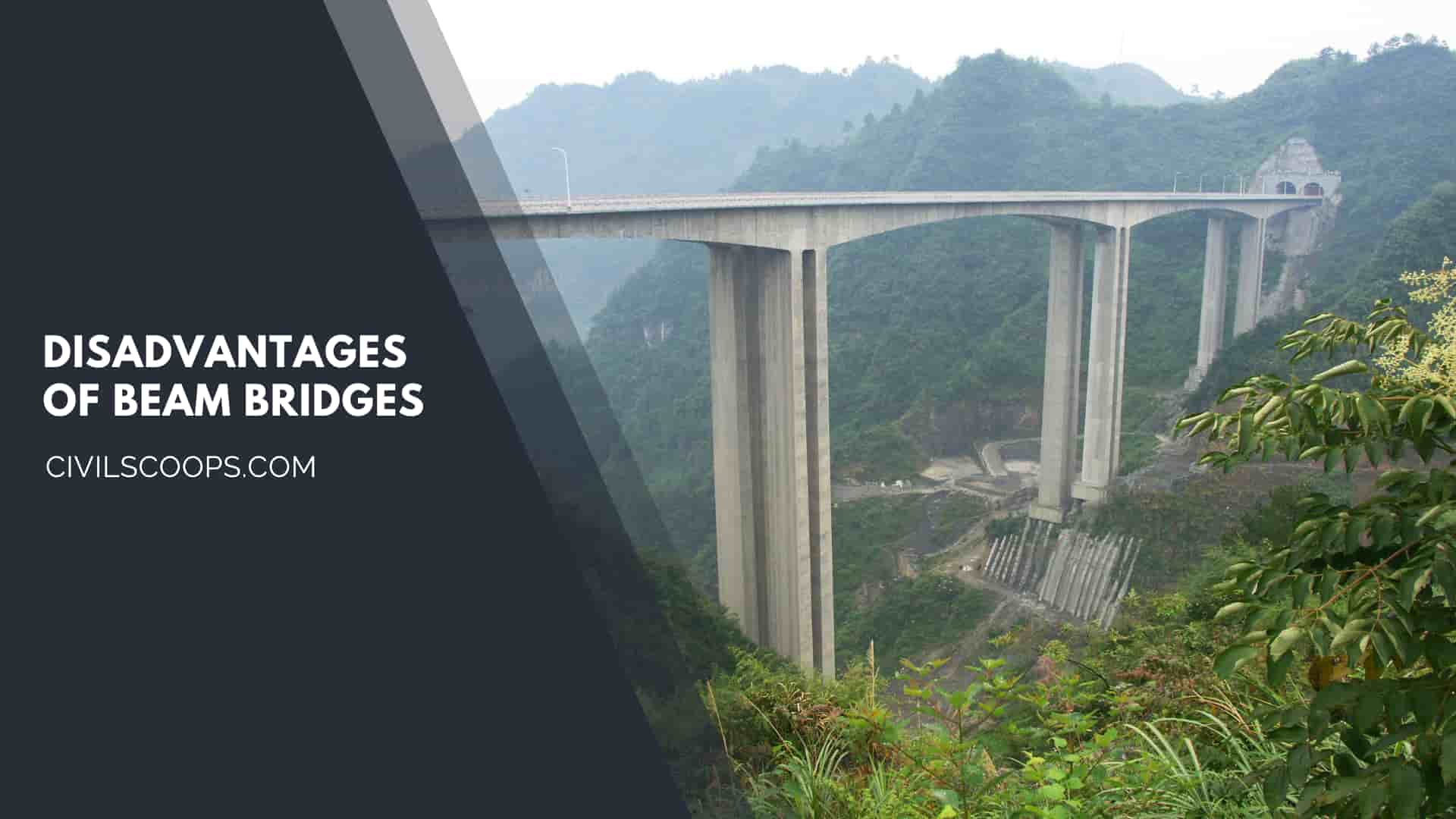
- The Construction of Beam Bridge is expensive for longer spans.
- Beam bridges undergo a significant amount of wear and tear.
- Beam Bridges required more Maintenance as compared to the other types of bridges.
- The Beam Bridge is only suitable for the short distance.
- Beam bridges are not aesthetical good as compared to other bridges.
- Beam bridges may start to sag due to excessive loads.
Beam Bridges Examples
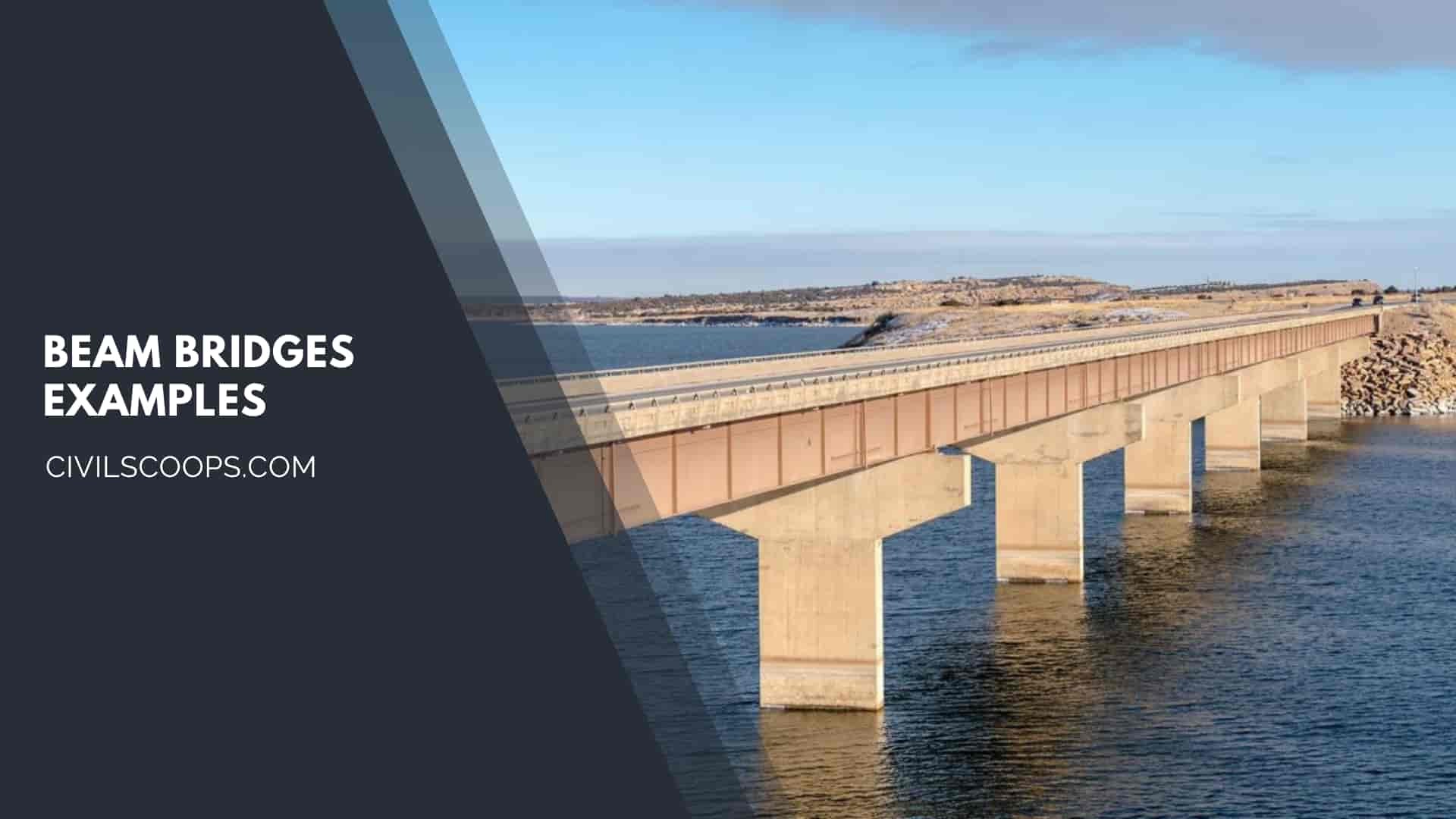
Some Famous beam Bridge are listed below
- Vikram Shila Bridge
- Lake Pontchartrain Causeway, Louisiana
- Manchac Swamp Bridge
Vikram Shila Bridge

Lake Pontchartrain Causeway, Louisiana

Manchac Swamp Bridge

[su_box title=”FAQ” style=”default” box_color=”#333333″ title_color=”#FFFFFF” radius=”3″ class=”” id=””]
What Is Precast Beam?
Precast concrete beams and slabs (or planks and joists) is a construction system comprised of precast concrete elements that span in modules between walls and are tied together with rebar that locks into a thin cast-in-place slab.
Beam Bridge
In its most basic form, a beam bridge consists of a horizontal beam that is supported at each end by piers. The weight of the beam pushes straight down on the piers. The beam itself must be strong so that it doesn’t bend under its own weight and the added weight of crossing traffic.
What Are Beam Bridges Made of?
Pre-stressed concrete is an ideal material for beam bridge construction; the concrete withstands the forces of compression well and the steel rods imbedded within resist the forces of tension. Pre-stressed concrete also tends to be one of the least expensive materials in construction.
Disadvantages of Beam Bridge
List of the Disadvantages of Beam Bridges
- There are no built-in supports for beam bridges.
- Span limitations exist for beam bridges.
- Beam bridges can sometimes start to sag as they age.
- There is little aesthetic value to consider with a beam bridge.
Advantages of Beam Bridge
List of the Advantages of Beam Bridges
- It does not take long to build a beam bridge.
- No moments are transferred with the beam bridge design.
- Beam bridges are useful in almost any location.
- You can use multiple types of material to build a beam bridge.
- There are multiple design options available for this bridge.
Beam Bridge Construction Process
Piers will generally be constructed above the foundations, and then beams or girders lifted on to them by crane which can either be erected on falsework around the pier or from ground level. After the main girders have been placed, the bridge deck can be positioned or cast in situ.
Beam Bridge Construction Materials
Bridge materials
- Concrete. Concrete is commonly used for many bridge superstructure members such as decks, pre-stressed concrete beams, curbs, sidewalks and parapets (side traffic barrier walls).
- Steel.
- Stone.
- Asphalt.
- Iron.
- Timber.
- Aluminum.
- Rubber.
Building a Beam Bridge
5 Steps to Build a Beam Bridge
- Step 1 – Survey the bridge location. Before doing any construction, make sure you study the location.
- Step 2 – Build the beam bridge foundation.
- Step 3 – Secure beams to foundation.
- Step 4 – Add planks to the bridge.
- Step 5 – Test the weight capacity.
Beam Bridge Examples
Beam Bridges
- Donghai Bridge. Situated in China, the Donghai Bridge is one of the longest sea bridges in the world measuring 32.5 km (20.2 miles).
- King Fahd Causeway (Bridges)
- Tokyo Gate Bridge.
- Ikitsuki Bridge.
- Forth Bridge.
- Howrah Bridge.
- Quebec Bridge.
- Iron Bridge.
Types of Beam Bridges
Types of Beam Bridges
- Straight beam. The straight beam meets the actual criteria.
- Curved beam. In the Curved beam to determine the stress in the curved member some assumptions are made.
- Tapered beam. A tapered beam is not subjected to uniform load.
- I-beam.
- T-beam.
- Simply supported beam.
- Cantilever beam.
- Overhanging beam.
Simple Beam Bridge
The simplest beam bridge could be a log (see log bridge), a wood plank, or a stone slab (see clapper bridge) laid across a stream. Bridges designed for modern infrastructure will usually be constructed of steel or reinforced concrete, or a combination of both.
Types of Concrete Girders
Types of Concrete Beams and their Reinforcement Details
- Simple Concrete Beams.
- Continuous Beam.
- Semi-Continuous Beam.
- Cantilever Beam.
- T – Beam.
T Beam Bridge
Tee beam bridges have cast-in-place, reinforced concrete beams with integral deck sections to either side of the tops of the beams. In cross section the beams are deeper than their deck sections, which produces the T-shape that gives them their names.
Cantilever Beam Bridge
A cantilever bridge is generally made with three spans, of which the outer spans are both anchored down at the shore and cantilever out over the channel to be crossed. The central span rests on the cantilevered arms extending from the outer spans; it carries vertical… In bridge: Cantilever bridges.
What Makes a Beam Bridge Strong?
The weight of the beam pushes straight down on the piers. The beam itself must be strong so that it doesn’t bend under its own weight and the added weight of crossing traffic. When a load pushes down on the beam, the beam’s top edge is pushed together (compression) while the bottom edge is stretched (tension).
How Much Does a Beam Bridge Cost?
As shown below, costs for concrete I-beam bridges can range from roughly $100/sq. ft all the way to about $580/sq.
[/su_box]
[su_note note_color=”#F2F2F2 ” text_color=”#333333″ radius=”3″ class=”” id=””]
Like this post? Share it with your friends!
Suggested Read –
- What Is Raft Foundation | Types of Foundation | Detail of Raft Footing
- All About Marble Price | What Is Marble | Types of Marble Available in India
- What Is Inverted Beam | Advantages of Inverted Beam | Purpose of Inverted Beam
- All About Door Hinges | 13 Different Types of Door Hinges | What Is Door Hinges | Types of Door Hinges
- All About Load Bearing Wall Construction | How to Tell If a Wall Is Load Bearing | Load Bearing Beam | Non-Load Bearing Wall | Non-Load Bearing Wall Framing
[/su_note]
Originally posted 2023-04-27 07:39:10.
